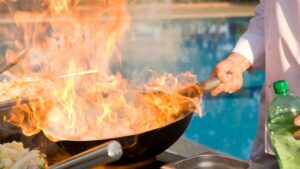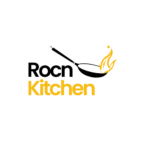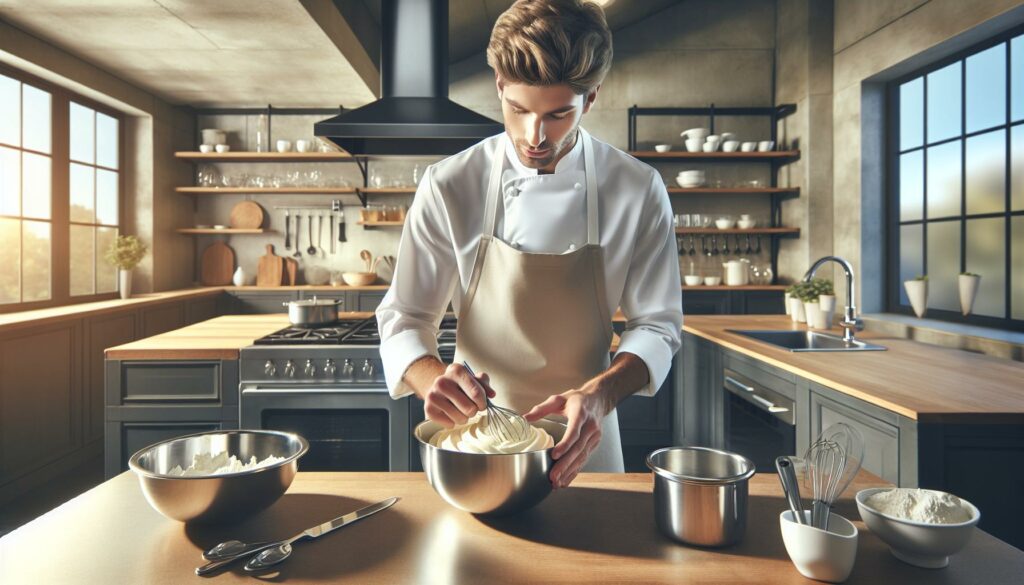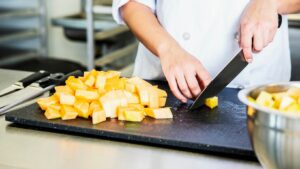Mastering the culinary arts isn’t just about following recipes – it’s about conquering those intimidating techniques that make professional chefs look like kitchen wizards. From the delicate art of soufflé-making to the precise science of tempering chocolate these challenging methods separate the cooking enthusiasts from the kitchen champions.
While some home cooks might run for the hills at the mention of making croissants from scratch or mastering the perfect béarnaise sauce there’s something incredibly rewarding about nailing these difficult techniques. It’s like unlocking secret levels in a video game except the rewards are edible and way more satisfying. Whether someone’s looking to elevate their cooking game or simply wants to impress dinner party guests learning these difficult cooking techniques will transform ordinary meals into extraordinary culinary experiences.
Difficult Cooking Techniques
- French Macarons
Creating perfect macarons requires precise temperature control, proper meringue texture control, and exact measurements of almond flour, egg whites and sugar. The delicate cookies demand 3-5 minutes of precise folding technique called “”macaronage”” to achieve the signature smooth tops and ruffled feet. - Beef Wellington
Executing a flawless Beef Wellington involves multiple critical steps: searing the beef tenderloin, preparing the mushroom duxelles, wrapping in prosciutto and puff pastry. The internal temperature must reach 125°F for medium-rare while maintaining a golden-brown, crispy exterior. - Croissants
Laminating dough for croissants involves creating 27 precise layers of butter and dough through multiple folding and rolling sequences. The process takes 12-14 hours, with specific temperature requirements between 65-68°F for optimal butter plasticity. - Fish en Papillote
Cooking fish en papillote requires expert timing to achieve perfectly steamed fish inside parchment paper. The technique demands precise vegetable cutting, proper sealing of the parchment package, and exact cooking times based on fish thickness. - Soufflés
Making soufflés involves creating a stable base sauce, properly whipping egg whites, gentle folding techniques to maintain air bubbles. The dessert rises 2-3 inches above the ramekin rim when baked at 375°F for exactly 12-14 minutes.
| Technique | Time Investment | Critical Temperature | Success Rate for First Attempts |
|---|---|---|---|
| Macarons | 2-3 hours | 300°F | 25% |
| Beef Wellington | 4-5 hours | 125°F (internal) | 35% |
| Croissants | 12-14 hours | 65-68°F | 20% |
| Fish en Papillote | 30 minutes | 400°F | 45% |
| Soufflés | 45 minutes | 375°F | 30% |
The Art of French Mother Sauces
French mother sauces form the foundation of classical French cuisine, serving as the base for hundreds of derivative sauces. These fundamental sauces require precise techniques, temperature control, and careful attention to achieve the perfect consistency and flavor.
Mastering Hollandaise Sauce
Hollandaise sauce combines clarified butter with egg yolks in an emulsion that requires exact temperature control between 145°F-160°F. The process starts with whisking egg yolks over a double boiler until they reach a ribbon-like consistency. Adding warm clarified butter in a thin stream creates the emulsion while constant whisking prevents the sauce from breaking. Common issues include curdled eggs from excessive heat or separated sauce from improper emulsification. Professional chefs recommend using room temperature ingredients to maintain stability throughout the process.
Creating the Perfect Béchamel
Béchamel sauce starts with a roux made from equal parts butter and flour cooked for 5-7 minutes until blonde. The technique demands gradual incorporation of warm milk into the roux while whisking continuously to prevent lumps. Temperature control stays critical at 180°F-185°F throughout the cooking process to achieve proper thickening. Professional kitchens strain the finished sauce through a fine-mesh sieve to ensure silky smoothness. The sauce reaches optimal consistency when it coats the back of a spoon and holds a clean line when drawn through with a finger.
Advanced Knife Skills and Precision Cuts
Mastering advanced knife skills transforms ordinary ingredients into professional-grade presentations. These precision cutting techniques create uniform pieces that ensure even difficult cooking techniques while elevating the visual appeal of dishes.
Proper Julienne Technique
The julienne cut creates matchstick-sized vegetables measuring 3 inches long by 1/8 inch square. Professional chefs execute this cut by first squaring off the ingredient to create flat surfaces. Here’s the precise sequence:
- Slice the ingredient into 1/8-inch thick planks
- Stack 2-3 planks together for stability
- Cut lengthwise into 1/8-inch wide strips
- Trim strips to 3-inch lengths for uniformity
Common ingredients for julienne cuts include:
- Carrots
- Celery
- Zucchini
- Bell peppers
- Leeks
Achieving Perfect Brunoise
Brunoise represents the finest of precision cuts, producing 1/8-inch cubes essential for elegant garnishes refined soups. This cut starts with julienne strips that transform into tiny uniform squares through specific steps:
- Create julienne strips following standard measurements
- Gather strips into tight parallel rows
- Cut across strips at 1/8-inch intervals
- Maintain steady knife control for consistent size
- Mirepoix for clear consommés
- Garnishes for cold soups
- Fine vegetable confetti for salads
- Aromatics for refined sauces
- Delicate garnishes for canapés
Temperature Control in Complex Cooking Methods
Temperature control stands as a critical factor in executing advanced culinary techniques. Precise temperature management determines the success of delicate processes such as chocolate work deep frying.
Tempering Chocolate
Chocolate tempering requires maintaining specific temperature ranges to achieve proper crystallization. Dark chocolate tempers at 88-90°F (31-32°C), milk chocolate at 86-88°F (30-31°C), and white chocolate at 84-86°F (29-30°C). The process involves heating chocolate to 115°F (46°C) to melt all crystals, cooling it to 81°F (27°C) to form beta crystals, then raising it to the working temperature. Professional chocolatiers use tempering machines to maintain these precise temperatures, though home cooks achieve similar results using the seeding method. Properly tempered chocolate exhibits a glossy shine, satisfying snap, and resists blooming or developing white streaks.
Maintaining Precise Oil Temperature
Deep frying demands strict temperature control between 325-375°F (163-190°C) for optimal results. A digital thermometer ensures accurate oil temperature readings throughout the cooking process. Different foods require specific temperatures: 350°F (177°C) for french fries, 375°F (190°C) for tempura, and 325°F (163°C) for chicken. Overheated oil creates burnt exteriors with raw interiors, while cool oil results in greasy, soggy food. Commercial kitchens use fryers with automatic temperature controls, though home cooks achieve professional results using heavy-bottomed pots, thermometers, and temperature monitoring. Maintaining consistent oil temperature prevents temperature drops when adding food batches.
Working with Delicate Pastry and Dough
Mastering delicate pastry and dough techniques requires precision temperature control and methodical handling. These advanced methods transform simple ingredients into sophisticated baked goods through specific folding patterns and controlled environments.
Lamination for Croissants
Lamination creates the signature flaky layers in croissants through a precise butter-folding process. The technique involves encasing a cold butter block within dough then performing multiple letter folds at 30-minute intervals. Professional bakers maintain the dough temperature between 65-68°F throughout the process to prevent butter melting. Each fold multiplies the layers exponentially, resulting in 27 distinct butter-dough layers after three turns. The final proofing stage requires 2-3 hours at 75-80°F with 80% humidity for optimal rise.
Hand-Pulling Noodles
 Hand pulled noodles originate from Chinese cuisine where master noodle makers stretch dough into silky strands through repeated pulling motions. The dough composition includes high-protein flour mixed with alkaline water to develop essential gluten strength. Expert noodle pullers stretch single portions of dough into 96 even strands in under 2 minutes. The technique requires maintaining consistent pulling pressure while folding the stretched dough in rhythmic movements. Room temperature stays between 70-75°F with 60% humidity to prevent dough from drying during manipulation.
Hand pulled noodles originate from Chinese cuisine where master noodle makers stretch dough into silky strands through repeated pulling motions. The dough composition includes high-protein flour mixed with alkaline water to develop essential gluten strength. Expert noodle pullers stretch single portions of dough into 96 even strands in under 2 minutes. The technique requires maintaining consistent pulling pressure while folding the stretched dough in rhythmic movements. Room temperature stays between 70-75°F with 60% humidity to prevent dough from drying during manipulation.
Mastering Live Fire and High-Heat Cooking
High-heat difficult cooking techniques create distinctive flavors through controlled exposure to intense temperatures. These methods demand precision timing, specialized equipment, and extensive practice to master the art of cooking with extreme heat.
Wok Hei Technique
Wok hei creates a distinctive smoky flavor in stir-fried dishes through extremely high heat and rapid tossing motions. Professional chefs achieve temperatures of 900°F (482°C) in carbon steel woks over powerful burners. The technique involves specific movements:
- Tossing ingredients in a circular motion to expose them to heat evenly
- Maintaining constant motion to prevent burning
- Timing ingredient additions based on cooking speeds
- Creating controlled flare-ups for added smokiness
The process requires:
| Element | Specification |
|---|---|
| Burner Output | 25,000+ BTU |
| Wok Temperature | 750-900°F |
| Cooking Time | 2-4 minutes |
| Oil Smoke Point | >450°F |
Wood-Fired Oven Control
Wood fired ovens operate at temperatures between 700-1000°F (371-538°C), creating perfect Neapolitan pizzas in 90 seconds. The dome shape creates distinct temperature zones:
| Zone | Temperature | Use Case |
|---|---|---|
| Floor | 750°F | Pizza base cooking |
| Dome | 1000°F | Surface browning |
| Mouth | 600°F | Slower cooking |
Key control elements include:
- Monitoring flame color to assess temperature
- Rotating food items for even cooking
- Managing airflow through vent manipulation
- Maintaining consistent wood feed rates
- Positioning food items based on desired heat exposure
These ovens produce distinct char patterns, leopard spotting on pizzas, and enhanced flavor development through rapid moisture evaporation.
Culinary Techniques Requires Dedication
Mastering advanced culinary techniques requires dedication patience and a willingness to learn from mistakes. While these challenging methods might seem intimidating at first they’re essential stepping stones to elevating one’s cooking abilities.
The journey from basic cooking to professional-level expertise is filled with opportunities for growth. Each successful attempt at tempering chocolate perfecting a mother sauce or crafting delicate pastries brings both satisfaction and new skills to the kitchen arsenal.
With practice and persistence any home cook can transform their culinary abilities into something extraordinary. The rewards of mastering these techniques extend far beyond the kitchen creating memorable dining experiences and a deeper appreciation for the culinary arts.


